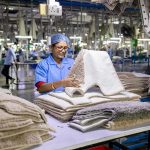When it comes to moisture-wicking technology, you might think of synthetic fabrics first. However, natural fibers like cotton and wool have unique properties that also allow them to manage moisture effectively. These materials utilize their structure to pull sweat away from your skin and help regulate your body temperature. Curious about how these natural fibers can compete with their synthetic counterparts? Let’s explore the science behind their impressive moisture management capabilities.
Table of Contents
Key Takeaways
- Moisture-wicking technology employs natural fibers like cotton and wool, utilizing their unique structures to absorb and transport sweat away from the skin.
- Capillary action within the fabric’s tiny channels facilitates the evaporation of moisture, aiding in temperature regulation.
- Natural fibers provide breathability and comfort, making them suitable for various physical activities, particularly in warm conditions.
- Innovations, such as blending natural and synthetic fibers, enhance moisture-wicking properties while maintaining comfort and sustainability.
- Treatment technologies, like antimicrobial coatings and water-repellent finishes, improve the performance of natural fibers in moisture management.
The Science Behind Moisture-Wicking Fabrics
While you might think of moisture-wicking fabrics as a modern innovation, the science behind them is rooted in the properties of natural fibers.
These fibers, like cotton and wool, have unique structures that allow them to absorb and transport moisture away from your skin. When you sweat, the moisture gets pulled into the fibers and then evaporates into the air, keeping you dry and comfortable.
This process is known as capillary action, where tiny channels in the fabric facilitate movement. Natural fibers are also breathable, allowing air to circulate and helping regulate your body temperature.
Advantages of Synthetic vs. Natural Fibers
When comparing synthetic and natural fibers, it’s essential to recognize the distinct advantages each offers.
Synthetic fibers, like polyester and nylon, excel in durability and moisture management. They dry quickly and resist shrinking, making them ideal for high-intensity activities.
Synthetic fibers like polyester and nylon offer exceptional durability and moisture management, perfect for high-intensity activities.
On the other hand, natural fibers, such as cotton and wool, provide breathability and comfort. They’re often softer on your skin and can be more environmentally friendly, as they come from renewable sources.
Natural fibers also have better thermal regulation properties, keeping you warm in cooler conditions.
Ultimately, your choice depends on your specific needs, whether you prioritize performance and durability or comfort and sustainability. Each type has its place in your wardrobe, serving different purposes effectively.
Innovations in Blending Natural and Synthetic Materials
The growing demand for performance apparel has spurred innovations in blending natural and synthetic materials. You’ll find fabrics that combine the breathability of cotton with the moisture-wicking properties of polyester. This blend enhances comfort and functionality, allowing you to stay dry during intense activities.
Manufacturers are experimenting with various ratios, creating fabrics that balance softness with durability.
You might also notice advancements in yarn technology, where natural fibers are treated to improve their performance without sacrificing their eco-friendly nature. These innovations not only elevate your experience but also contribute to sustainability.
As you choose your next activewear, consider these blends for a perfect combination of comfort, style, and functionality that meets your active lifestyle needs.
Treatment Technologies for Enhancing Natural Fibers
As demand for high-performance fabrics rises, treatment technologies are stepping up to enhance the properties of natural fibers.
The growing demand for high-performance fabrics is driving advancements in treatment technologies for natural fibers.
These innovations not only improve moisture management but also increase durability and comfort.
You’ll find several effective treatment methods that can transform your natural fabrics into high-performance materials:
- Antimicrobial treatments: These minimize odor and bacterial growth, keeping your garments fresh longer.
- Water-repellent coatings: These treatments help repel water while maintaining breathability, ideal for outdoor activities.
- Softening agents: These enhance the feel of natural fibers, making them more comfortable against your skin.
Performance Metrics: Evaluating Moisture Management
How can you truly measure the effectiveness of moisture management in fabrics? Start by examining key performance metrics like moisture absorption rate, drying time, and comfort level.
You can conduct tests that quantify how quickly a fabric absorbs sweat and releases it to the environment. Look for fabrics that dry quickly, as this enhances comfort during physical activities.
Additionally, consider breathability; a fabric that allows air circulation will help regulate temperature. You might also evaluate how the fabric feels against your skin when wet.
Testing these factors will give you a thorough understanding of a material’s moisture management capabilities, helping you choose the best options for your needs.
Frequently Asked Questions
How Do Moisture-Wicking Fabrics Feel Against the Skin?
Moisture-wicking fabrics feel cool and comfortable against your skin. They pull sweat away, keeping you dry and reducing cling. You’ll appreciate the lightweight, breathable sensation, especially during workouts or hot weather activities.
Can Moisture-Wicking Treatments Be Applied at Home?
Imagine transforming your favorite cotton shirt into a moisture-wicking marvel. You can apply certain treatments at home, like fabric sprays or wash-in solutions, but results may vary, so don’t expect miracles every time.
Are There Eco-Friendly Moisture-Wicking Options Available?
Yes, there are eco-friendly moisture-wicking options available. You can find fabrics made from organic cotton, hemp, or bamboo. These materials naturally wick away moisture while being sustainable, so you can stay comfortable and environmentally conscious.
How Often Should Moisture-Wicking Fabrics Be Washed?
You should wash moisture-wicking fabrics after every few wears, especially if they’re sweaty or soiled. Regular cleaning maintains their performance and freshness, ensuring they continue to effectively wick away moisture during your activities.
Do Moisture-Wicking Fabrics Retain Odor Over Time?
Yes, moisture-wicking fabrics can retain odor over time, especially if they’re not washed regularly. Bacteria buildup leads to unpleasant smells, so it’s essential to clean them after use to keep your gear fresh.
- Is Polyamide a Type of Polyester? Clearing Up the Confusion - June 30, 2025
- Polyamide vs. Polyester: What’s the Real Difference? - June 30, 2025
- How Fire Resistant Is Polyamide? Flammability and Safety Ratings - June 30, 2025







